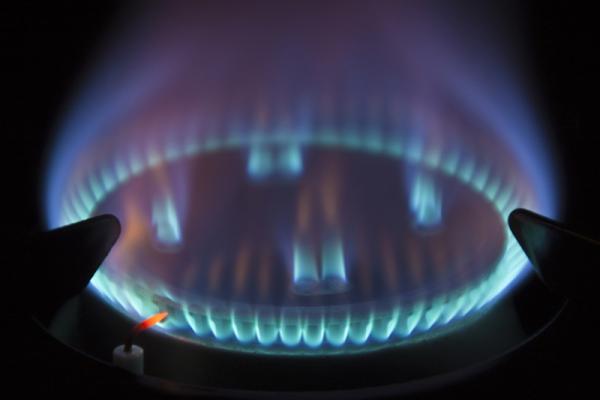BEIS consultation on how to pay subsidies for biomethane closes today

SUBSIDIES FOR BIOMETHANE SHOULD BE FUNDED FROM GENERAL TAXATION NOT BY LEVY ON HOUSEHOLD GAS BILLS
Levy to pay for renewables will cost £10 per week per household on household energy bills by 2022 regardless of income and ability to pay and this is not fair says GMB London.
GMB London, the union for gas and energy workers, responded to the Government consultation on how to fund subsidies for biomethane by calling for them to be funded from general taxation.
Government consultation on this issue closes on 2nd November. See links.
Department for Business, Energy and Industrial Strategy (BEIS), “Consultation on a Green Gas Levy”, 2020, https://assets.publishing.service.gov.uk/government/uploads/system/uploads/attachment_data/file/919901/consultation-green-gas-levy.pdf
See below notes to editors for press release from the Gas Users Organisation which has technical details on biomethane and the problems about sourcing it.
Gary Pearce, GMB London Region Organiser (energy) said:
"Any subsidies for biomethane gas should be funded from general taxation not by a levy on household gas bills.
“BEIS claims that the levy will be only £6.90 per household per year. However, this on top of subsidies to fund renewable electricity sources, which are already paid for by a levy on household energy bills.
“The Office of Budget Responsibility calculates that by 2022 the green levy to pay for renewables will cost £10 per week per household on household energy bills regardless of income and ability to pay. This is completely unfair.”
“GMB Congress policy is that all subsidies should be paid for from general taxation which is linked to the ability to pay.
“In addition, GMB London want absolute guarantees that no subsidies will be paid if there is any question of land being used to source biofuels displacing food production. There has to be a recognition that biofuels are of marginal importance in moving to zero carbon fuels and the extent to which they can be called zero carbon has to be constantly examined."
End
Contact: Gary Pearce, GMB London Region Organiser 078 5003 6952
Notes to editors
Below is a copy of the press release from the Gas Users Organisation.
Government plans for a Gas Meter Tax to pay for low carbon heating will shift costs onto lower income households, warns the Gas Users Organisation, which promotes the interests of the UK’s 24 million households who heat their homes using gas.
Any subsidies for biomethane gas should be funded from general taxation not by a levy on household gas bills, says, Andrew Newman, Technical Director of the Gas Users Organisation.
The Department for Business, Energy and Industrial Strategy (BEIS) is consulting over a proposed new Gas Meter Tax, that will levy gas suppliers with the expectation that the costs will be passed on to customers. This is not in the interests of the 24 million households who use gas for their domestic heating. This is particularly concerning in the early phase where a flat charge per connected gas meter is proposed, so that a one bedroom flat will be charged the same rate as a ceramics factory.
Andrew Newman, explains:
“The Gas Meter Tax is proposed to subsidise the injection of so-called “biomethane” into the gas grid, which is chemically the same as Natural Gas but made from renewable sources.
“Green gas is a really good idea so that gas customers can keep their gas supplies, and the gas grid in the future will carry zero-carbon gas. But there are technical issues with the current way that biomethane is made, which means that it can only make a relatively small contribution. The heavy lifting for green gas will come from a future transition to hydrogen
“The danger of the government’s approach is that it establishes a principal of the consumer paying a gas meter tax for what will at first only be used for a relatively minor contributing strand towards decarbonisation. Once established, the same tax will then be employed to fund the much larger infrastructure projects required for a shift to hydrogen in the future. A Gas Meter Tax hits hardest at those who can least afford to pay. Many people with limited incomes have hard to heat homes, that are poorly insulated, and higher fuel bills will force people to choose between heating and eating.
“Already we see this in the operation of subsidies to fund renewable electricity sources, which are paid for by a levy on household energy bills. The OBR calculate by 2022 the green levy to pay for renewables will cost £10 per week per household on household energy bills regardless of income and ability to pay.
“A much better approach is for the cost of zero-carbon energy to be paid for through general taxation, which is linked to ability to pay”
NOTES FOR EDITORS
The Gas Users Organisation is a recently formed community interest company established to operate for the benefit of households who use domestic gas; and for individual engineers registered with Gas Safe
Contact: Andrew Newman CEng MIET MIGEM,
Technical Director, on 0754 0859 227
Or email Andrew.newman@gas-users.org
Government consultation on the Gas Meter Tax closes on 2nd November.
BEIS, “Consultation on a Green Gas Levy”, 2020, https://assets.publishing.service.gov.uk/government/uploads/system/uploads/attachment_data/file/919901/consultation-green-gas-levy.pdf
PASSING COSTS ONTO CONSUMERS
BEIS claims that the Gas Meter Tax will be only £6.90 per consumer per year. However, this is the thin end of the wedge, paying for what is currently only a very marginal contribution to UK gas demand. 10 MWh worth of low carbon gas from biomethane is fed into the gas grid. Compared to 2019 domestic gas demand of 309 000 000 MWh . As the green gas sector grows then costs will grow as well, and consumers need protection from those rising costs.
see “RHI deployment data” table 1.5, Department of Business Energy and Industrial Strategy, https://www.gov.uk/government/statistics/rhi-monthly-deployment-data-january-2020 (2020) for current biomethane production.
and for Domestic gas demand, see BEIS, “UK ENERGY IN BRIEF 2020”, 2020, https://assets.publishing.service.gov.uk/government/uploads/system/uploads/attachment_data/file/904503/UK_Energy_in_Brief_2020.pdf
The OBR calculate by 2022 the green levy to pay for renewables will cost £10 per week per household on household energy bills regardless of income and ability to pay. Office for Budget Responsibility (OBR), Economic and Fiscal Outlook, p 104, Environmental Levies, March 2017
USING AGRICULTURAL BIOMASS AS FUEL
There is understandable skepticism in many quarters towards using land for biomass rather than food production, and it is welcome that BEIS is encouraging biomethane via AD to be produced from waste instead.
However biomethane projects in the UK have mainly used agriculturally sourced biomass (typically maize) as the fuel-stock, as this has the advantage of greater geographic flexibility, because a potential producer could find a spot on grid with capacity, where they could get planning permission, and then find local farmers to produce feedstock.
Using waste as fuel is more difficult, as the availability of fuel may not be near where the gas can be injected into the grid. Increasing traffic on rural roads.
TECHNICAL PROBLEMS WITH BIOMETHANE
There are also grounds for concern on technical grounds over BEIS’s strategy. Biomethane can be manufactured by two different processes. The method being supported by the government has the problem that it is difficult to inject the gas into the grid.
The UK gas Grids are not designed for smaller distributed sources of biomethane, such as the ones the government is supporting, and lack of capacity has been a pinch point inhibiting expansion of the biomethane market, as new plants must find sites where there is enough capacity in inject their gas which is particular problem on those parts of grid which have very low demand in the summer. Biomethane plants are designed to operate with a fixed capacity, so lack of capacity in the grid during summer months can cause the gas to be flared, both wasteful and producind greenhouse gases. This is common in the UK.
See Baldwin J., “Biomethane and its role in decarbonising the gas network: Webinar with focus on within grid compression“, IGEM, June 2020. https://vimeo.com/425144617/26769882dd, retrieved June 2020.
Lack of grid capacity has led to approximately 30% of potentially viable biomethane projects in the UK either not proceeding at all, or the gas has gone instead to electricity rather than being fed into the grid.
In the UK, some projects have failed, due to lack of capacity in the grid to receive the gas, for example, Grindley Farm, has been closed since 2018, having operated for only 1500 hours since opening in 2016. See Lambert Smith Hampton, agent for machinery and Business Assets. https://www.lsh.co.uk/mba/private-treaty/grindley-biogas-ltd , retrieved June 2020.


